EXTERIOR ANGLES ON THE SAME SIDE OF THE TRANSVERSAL THEOREM
Subscribe to our ▶️ YouTube channel 🔴 for the latest videos, updates, and tips.
Theorem :
If two parallel lines are cut by a transversal, then exterior angles on the same side of the transversal are supplementary.
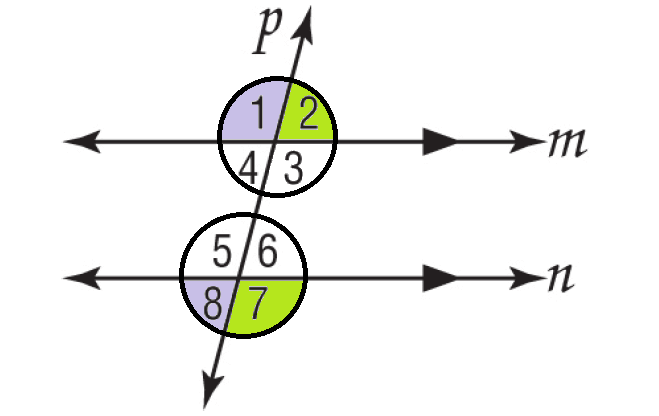
Given : m||n, p is transversal.
Prove : ∠1 and ∠8 are supplementary and ∠2 and ∠7 are supplementary.
|
Statement m||n, p is transversal. |
Reason Given |
|
∠1 & ∠4 - linear pair ∠2 & ∠3 - linear pair |
Definition of linear pair |
|
∠1 & ∠4 - Supplementary m∠1 + m∠4 = 180° ∠2 & ∠3 - Supplementary m∠2 + m∠3 = 180° |
Supplementary Postulate |
|
∠4 ≅ ∠8 and ∠3 ≅ ∠7 |
Corresponding Angles Theorem |
|
∠1 & ∠8 - Supplementary ∠2 & ∠7 - Supplementary |
Substitution Property |
Consecutive Exterior Angles :
If two lines are cut by a transversal, the pair of angles on the same side of the transversal and outside the two lines are called consecutive exterior angles.
Exterior Angles on the Same Side of the Transversal Theorem – Converse
When two lines are cut by a transversal, if exterior angles on the same side of the transversal add up to 180°, then the two lines are parallel
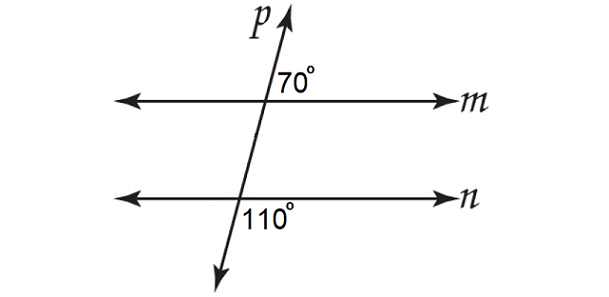
In the figure above, lines m and n are parallel. Because, a pair of angles on the same side of the transversal p and outside the two lines m and n are supplementary.
110° + 70° = 180°
Solved Problems
Problem 1 :
In the figure shown below, m∠1 = 105°. Find the measure of ∠8.
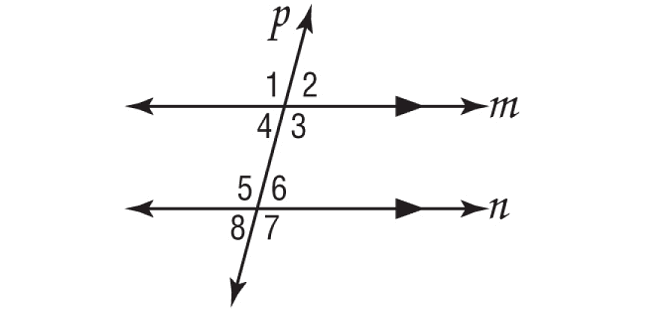
Solution :
In the figure above, lines m and n are parallel and p is transversal.
∠1 and ∠8 are on the same side of the transversal p and outside the parallel lines m and n.
m∠1 + m∠8 = 180°
Substitute m∠1 = 105°.
105° + m∠8 = 180°
Subtract 105° from each side.
m∠8 = 75°
Problem 2 :
In the figure shown below, m∠1 = 102°. Find the measures ∠8, ∠15 and ∠10.
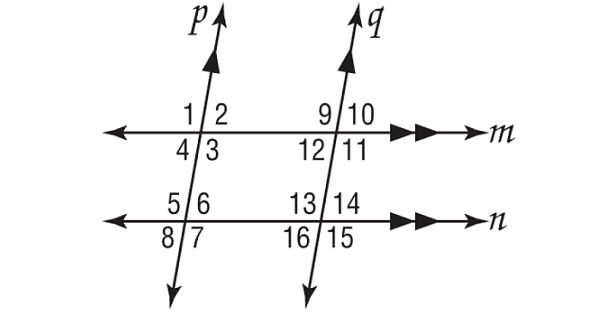
Solution :
In the figure above, lines m and n are parallel, p and q are parallel.
∠1 and ∠8 are on the same side of the transversal p and outside the parallel lines m and n.
m∠1 + m∠8 = 180°
Substitute m∠1 = 102°.
102° + m∠8 = 180°
Subtract 102° from each side.
m∠8 = 78°
∠1 and ∠10 are on the same side of the transversal m and outside the parallel lines p and q.
∠1 and ∠10 are consecutive exterior angles.
m∠1 + m∠10 = 180°
Substitute m∠1 = 102°.
102° + m∠10 = 180°
Subtract 102° from each side.
m∠10 = 78°
∠10 and ∠15 are on the same side of the transversal q and outside the parallel lines m and n.
m∠10 + m∠15 = 180°
Substitute m∠10 = 78°.
78° + m∠15 = 180°
Subtract 78° from each side.
m∠15 = 102°
Therefore,
m∠8 = 78°
m∠10 = 78°
m∠15 = 102°
Problem 3 :
In the figure shown below, lines m and n are parallel and p is transversal. Find the value of x.
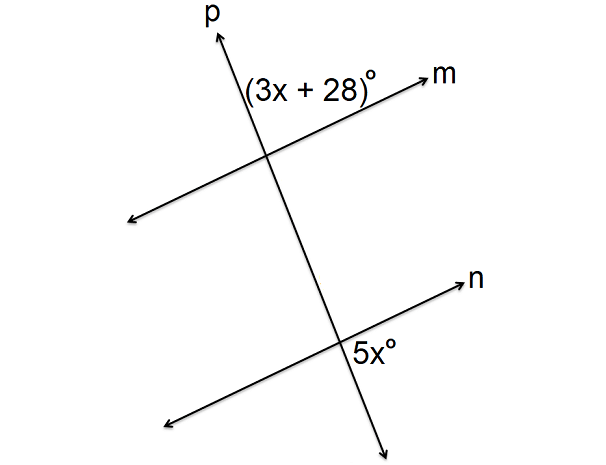
Solution :
In the figure shown above, (3x + 28)° and 5x° are on the same side of the transversal p and outside the parallel lines m and n.
(3x + 28)° + 5x° = 180°
3x + 28 + 5x = 180
8x + 28 = 180
Subtract 28 from each side.
8x = 152
Divide each side by 8.
x = 19
Subscribe to our ▶️ YouTube channel 🔴 for the latest videos, updates, and tips.
Kindly mail your feedback to v4formath@gmail.com
We always appreciate your feedback.
About Us | Contact Us | Privacy Policy
©All rights reserved. onlinemath4all.com

Recent Articles
-
10 Hard SAT Math Questions (Part - 44)
Jan 12, 26 06:35 AM
10 Hard SAT Math Questions (Part - 44) -
US Common Core K-12 Curricum Algebra Solving Simple Equations
Jan 07, 26 01:53 PM
US Common Core K-12 Curricum Algebra Solving Simple Equations -
10 Hard SAT Math Questions (Part - 4)
Jan 05, 26 06:56 PM
10 Hard SAT Math Questions (Part - 4)
